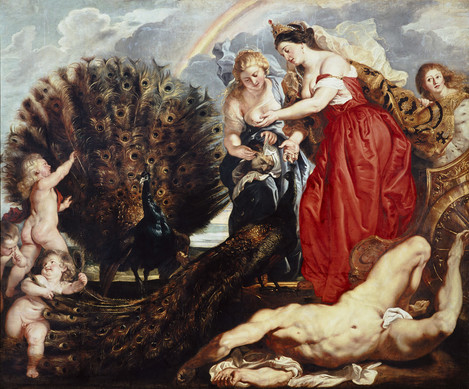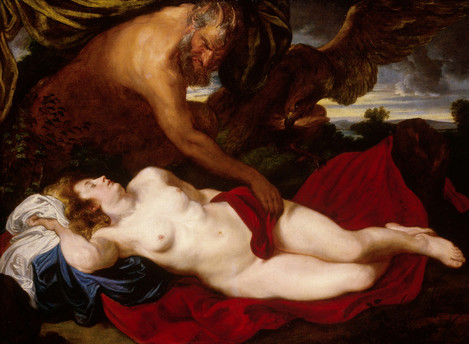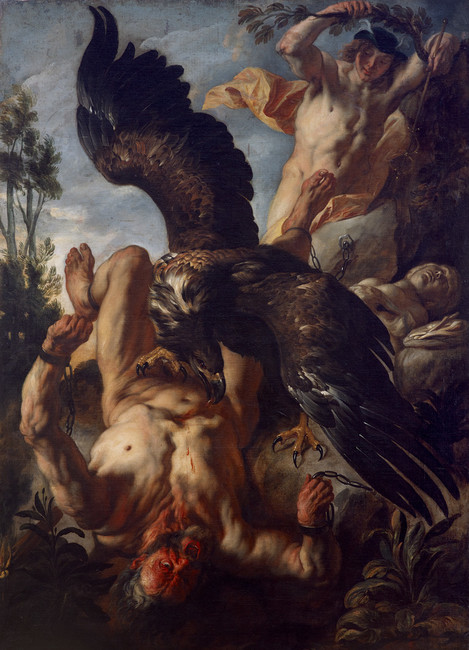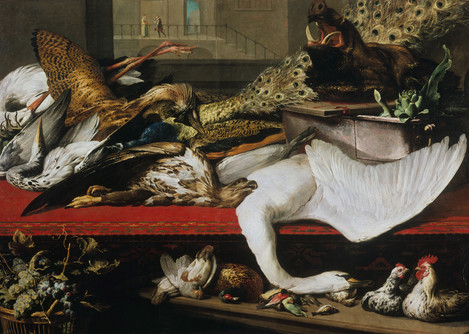Overwhelming the Senses
The history of the word ‘Baroque’ is no less fascinating than the age itself. Derived from the Portuguese word for an irregular pearl, ‘barocca’, the term became symbolic of the pleasures of the senses and pompous splendour, but also of the overblown and bombastic.
Historically, the Baroque (c. 1580–1750) was an age of contrasts: courtly display and bourgeois prosperity, the discovery of the world, pioneering inventions, and a flowering of culture on the one hand, and wars, religious struggles, natural disasters, disease and famine on the other. The awareness of the transience of all earthly things, good and evil alike, was omnipresent. Exhortations to virtuous moderation were no less prevalent than symbols of pure joie de vivre. People reflected upon memento mori (‘remember you will die’) whilst at the same time indulging in carpe diem (‘live for the day’). All these aspects are also reflected in the visual arts of the age.
Mythological and biblical stories provided the script for pictorial narratives, dramatic and sensual alike. Painters staged them on their canvases as they would on an actual stage: theatrically and on a large scale. The beholder was to be shocked or moved by merciless horror or sublime beauty.
Hand in hand with the increasingly middle-class nature of the clientele, artists discovered new motifs and genres. The material world became an object for depiction in its own right. Landscapes and still lifes disseminated the diversity and splendour of creation. With fluent brushwork and melting colours, painters created truly eye-deceiving illusions of nature.
The epitome of the Baroque was the Flemish painting of the Golden Age, to which this room is devoted. In addition sixteenth-century artists are represented who prepared the way for the famous Baroque masters Rubens, van Dyck and Jordaens.
 Peter Paul Rubens (Siegen 1577 – 1640 Antwerpen), Juno und Argus, um 1610, Leinwand, Stiftung der Kölner Kunstfreunde, 1894, Wallraf-Richartz-Museum
Peter Paul Rubens (Siegen 1577 – 1640 Antwerpen), Juno und Argus, um 1610, Leinwand, Stiftung der Kölner Kunstfreunde, 1894, Wallraf-Richartz-Museum Anthonis van Dyck (Antwerpen 1599 – 1641 London), Jupiter als Satyr bei Antiope, um 1620, Leinwand, Leihgabe der Bundesrepublik Deutschland, 1966
Anthonis van Dyck (Antwerpen 1599 – 1641 London), Jupiter als Satyr bei Antiope, um 1620, Leinwand, Leihgabe der Bundesrepublik Deutschland, 1966 Jacob Jordaens (Antwerpen 1593 – 1678 Antwerpen), Der gefesselte Prometheus, um 1640, Leinwand, Erworben 1860, Wallraf-Richartz-Museum
Jacob Jordaens (Antwerpen 1593 – 1678 Antwerpen), Der gefesselte Prometheus, um 1640, Leinwand, Erworben 1860, Wallraf-Richartz-Museum Frans Snijders (Antwerpen 1579 – 1657 Antwerpen), Stillleben mit Geflügel und Wildschweinkopf, 1614, Leinwand, Erworben 1953 mit Unterstützung des Kunst- und Auktionshauses Angersbach, Köln, Wallraf-Richartz-Museum
Frans Snijders (Antwerpen 1579 – 1657 Antwerpen), Stillleben mit Geflügel und Wildschweinkopf, 1614, Leinwand, Erworben 1953 mit Unterstützung des Kunst- und Auktionshauses Angersbach, Köln, Wallraf-Richartz-Museum


